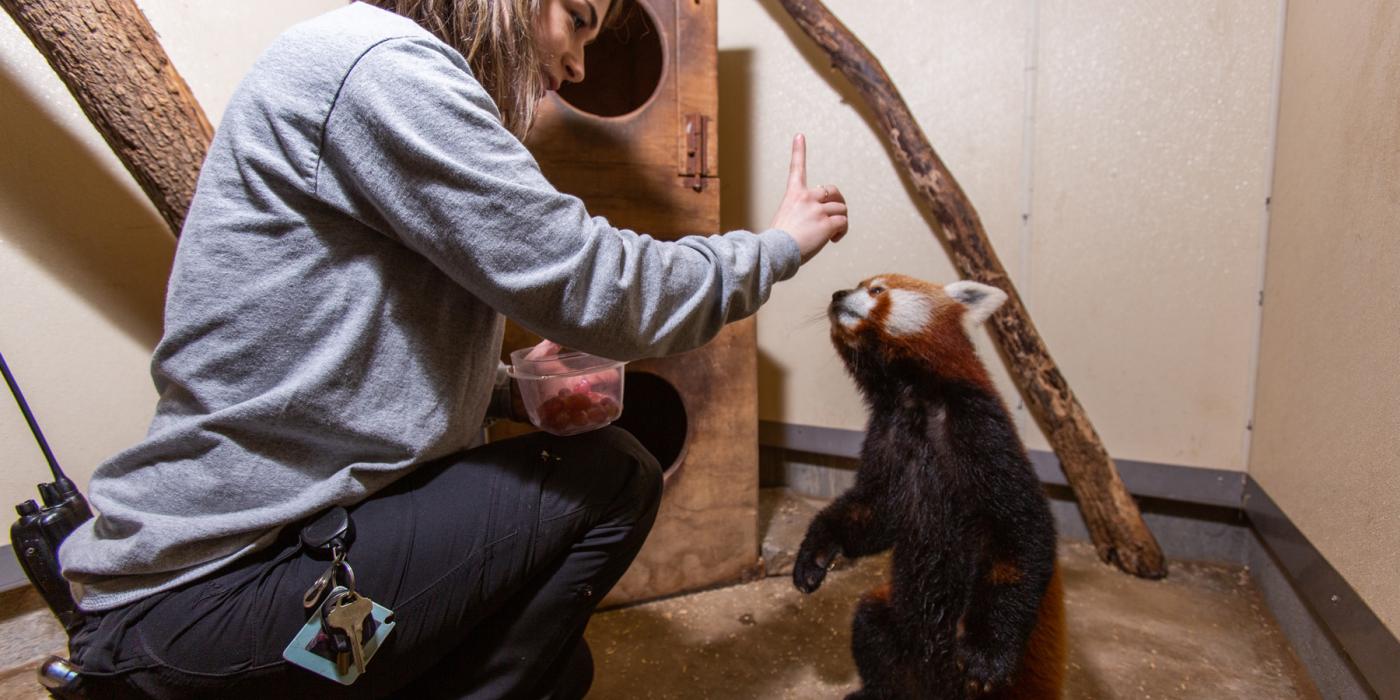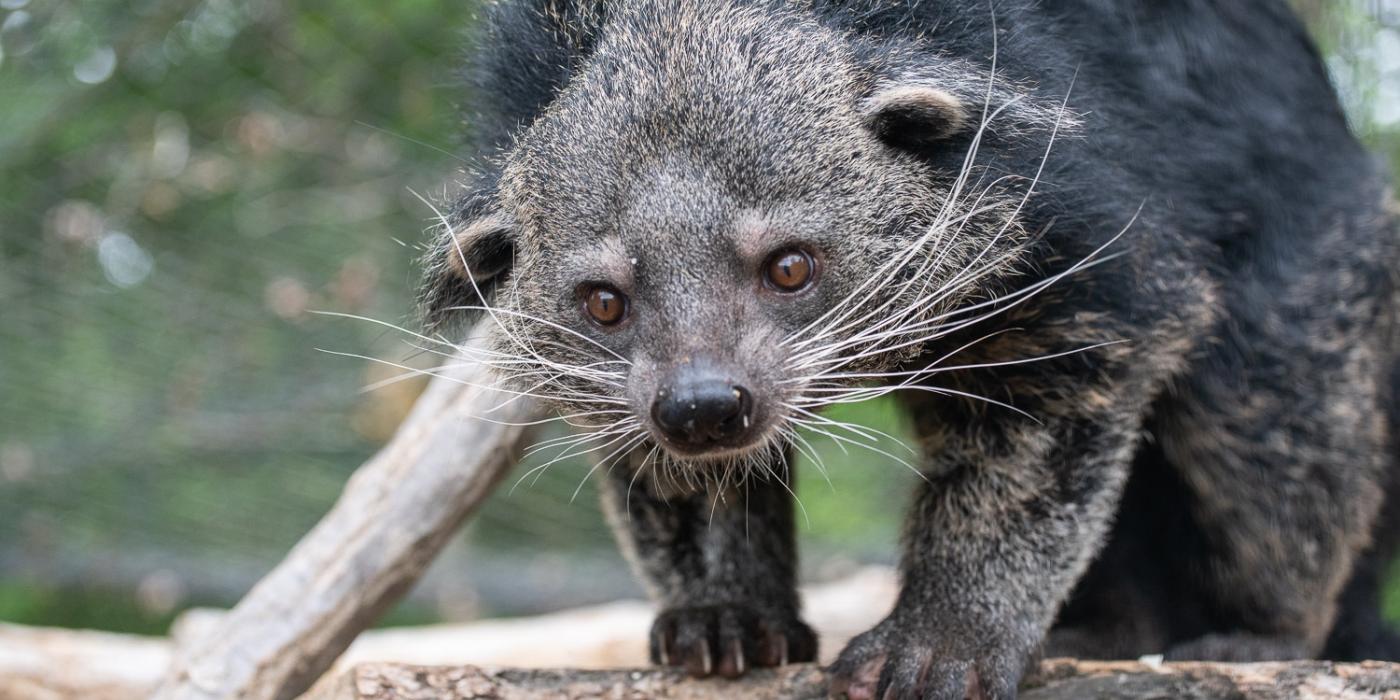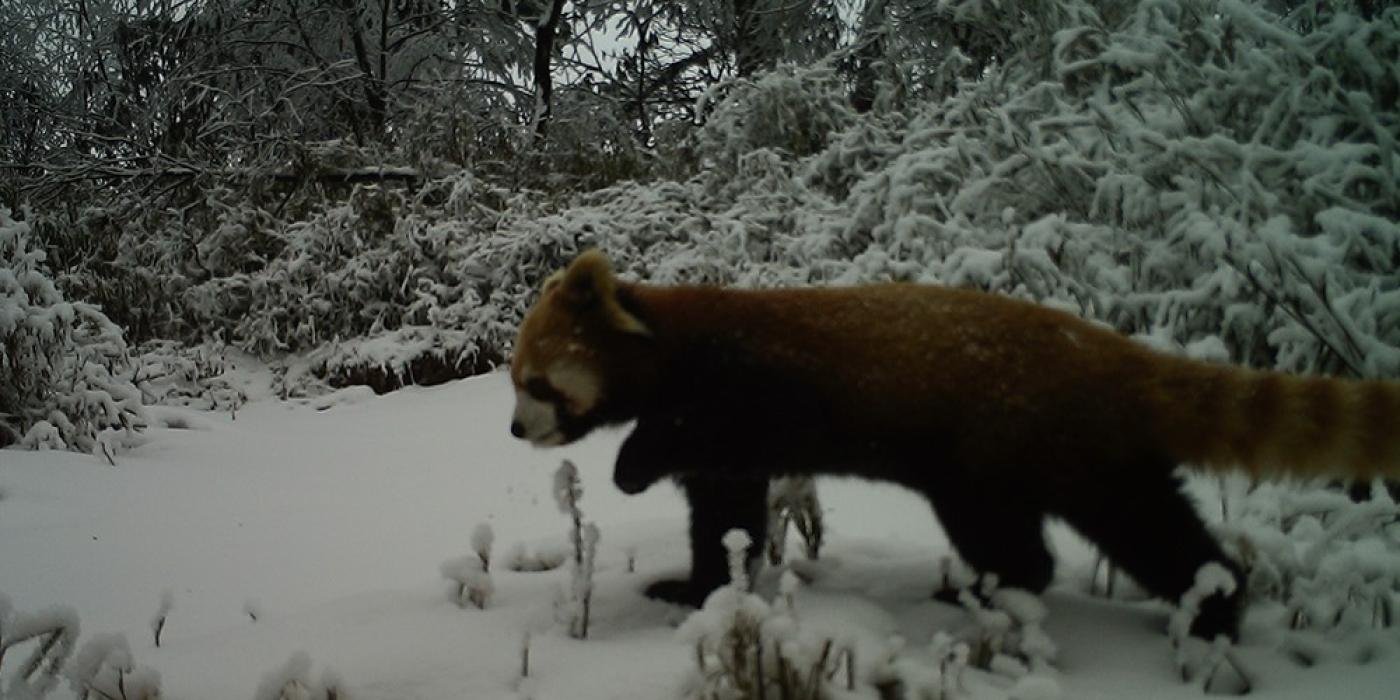How to Care for Red Pandas
Take an inside look at what goes into caring for animals around the zoo and get the story straight from our animal care experts. Animal keeper Mariel Lally works on Asia Trail with giant pandas, sloth bears, clouded leopards, fishing cats, Asian small-clawed otters and, of course, red pandas. This month, Lally shares the fluffy scoop on caring for red pandas.
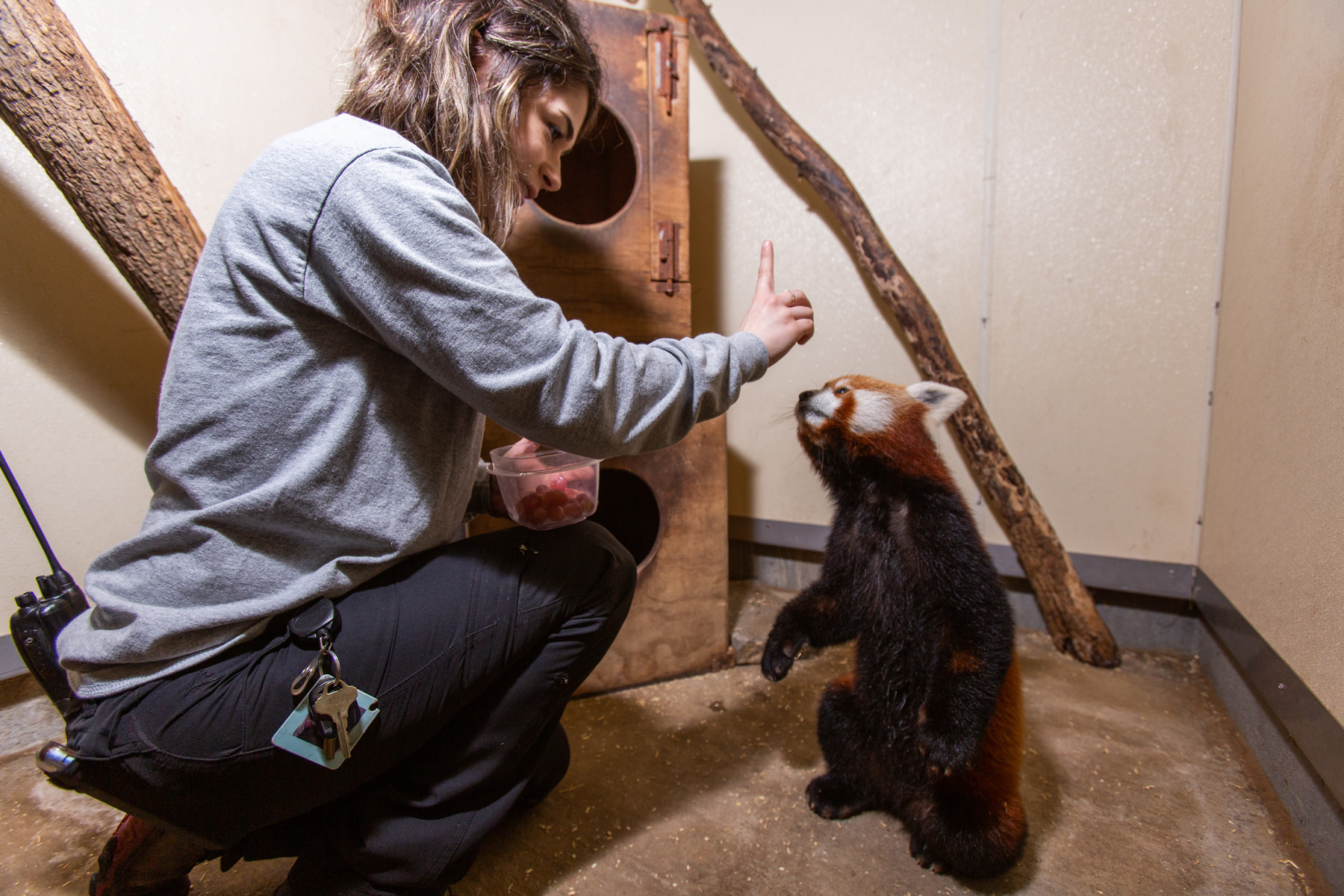
Red pandas are really interesting animals to work with, especially since they are an endangered species that we do not know as much about compared to other species, like the giant panda. They are very secretive in the wild, which makes them difficult to study. A lot of what we are learning about them comes from zoos! I feel lucky to work as closely as I do with them, because it gives me an opportunity to inspire visitors to care about red panda conservation.
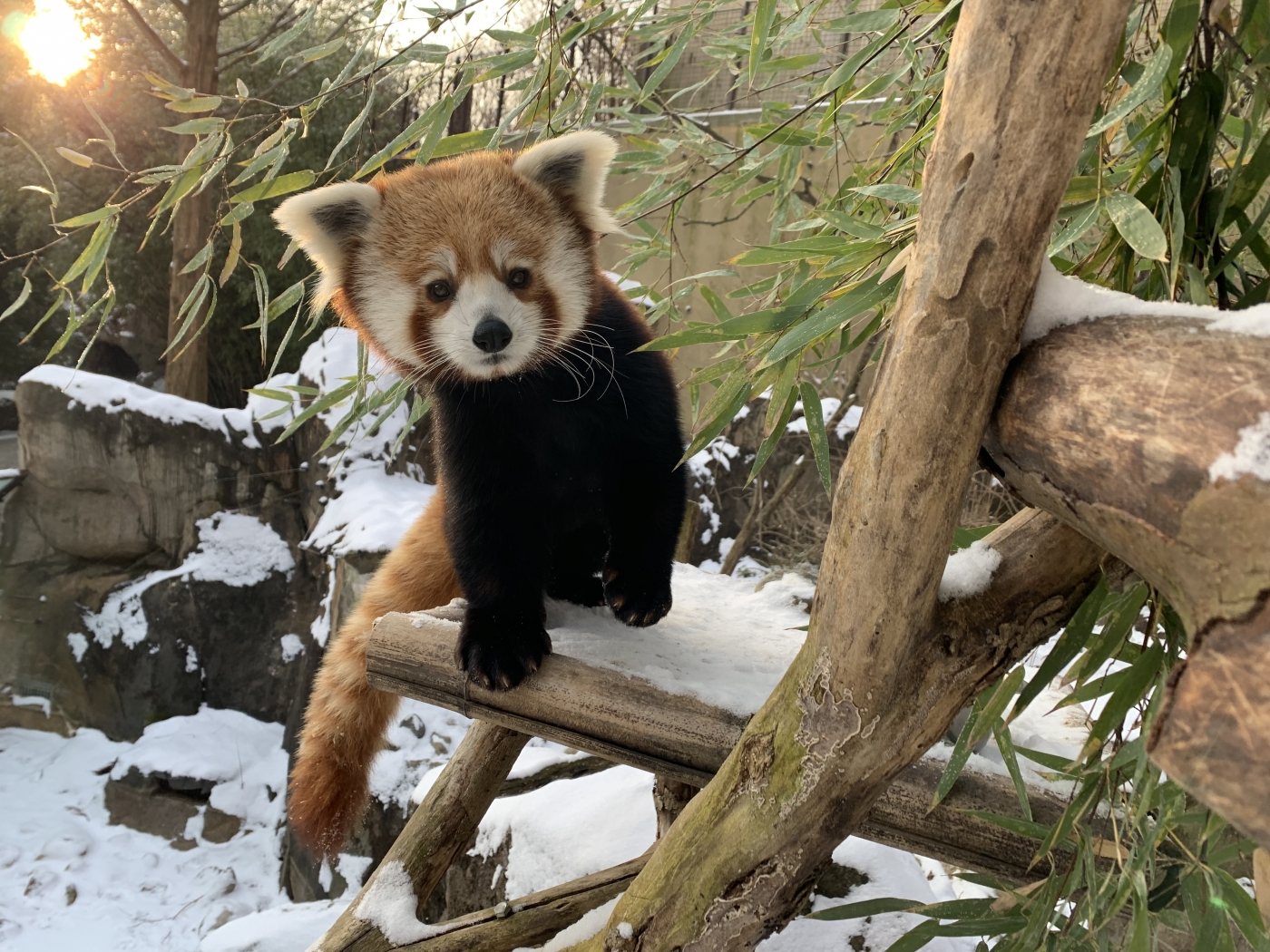
Red pandas are found in the Himalayan mountain range through Nepal, India and China, where it is snowy and freezing for a good portion of the year. This is drastically different from Washington, D.C.’s climate most of the year. During the winter, red pandas can easily stay out until the temperature reaches negative 10 degrees Fahrenheit, which rarely happens in D.C.!
However, when it gets up to about 70 degrees, the red pandas need access to cooler areas. During our hot summers, our animal care team leaves the door open to their indoor enclosure, which is always about 65 degrees and breezy.
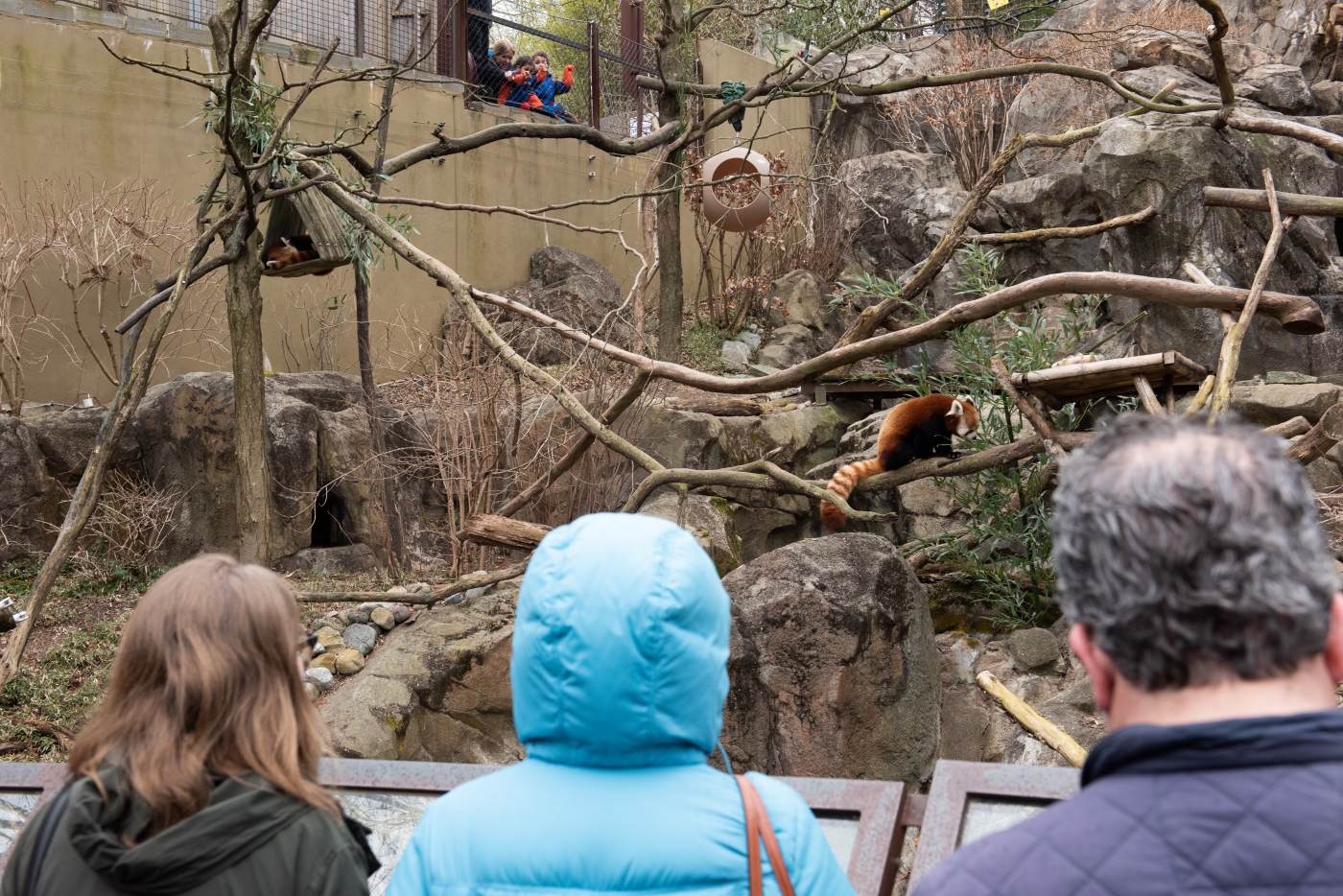
To encourage them to explore their outdoor enclosure, we have a water system that creates a cool mist over their favorite spots. The exhibit also has dens, providing shade and a cool surface to rest on. To make the dens even colder, we have marble slabs that we can put in them.
We also encourage them to spend time outside around dawn and dusk. This time is ideal because red pandas are crepuscular, which means they are most active at dawn and dusk.

A red panda’s day is pretty simple: whether they are at the zoo or in the wild, they eat and sleep through the majority of the day. Red pandas mainly eat bamboo — a grass that makes up about 98% of their diet. Like giant pandas, red pandas have a carnivore’s digestive system, but they have evolved and adapted to primarily eat plants.
In the wild red pandas are solitary and encounter predators. At the zoo, red pandas don’t have to worry about predators, but they may live with another red panda! Red pandas in human care seem to tolerate a companion as long as there is adequate space. Living in pairs is also a form of enrichment. Enrichment is anything from sensory experiences (like spices for scent-anointing) to physical objects and toys, to social interactions with their keepers (like husbandry training) and environmental stimuli (like access to a different area or yard).
While red pandas eat bamboo as the main staple of their diet, their non-bamboo diet items are always provided in enrichment. These include treats like leaf-eater biscuits, grapes, apples and occasionally blueberries. Puzzle feeders, such as kong toys and whiffle balls encourage the red pandas to use their natural foraging behaviors by moving and manipulating the feeders to access the tasty morsels within. In addition to giving them some physical exercise, they also have to think about how to get the treats out, which helps keep their minds sharp.
Not all enrichment toys involve food, though. Teeter-totters, tubs and mirrors can also encourage our red pandas to be active and explore their surroundings. The first time our male, Jackie, saw the toy mirror, he was startled and started playing with the tree it was leaning against, looking for other red pandas.
A huge component of caring for red pandas is teaching them husbandry behaviors that enable us to monitor their health and body condition. We have a positive reinforcement training program and work with them daily. However, training is completely voluntary. If they do not want to train one day, they are free to spend their time doing other things. If they do choose to participate, they are rewarded with some of their favorite foods.
Both of our red pandas are trained to do a variety of behaviors. They know their names and to come if called by their keepers. This is very helpful for when a severe storm is suddenly rolling through and we need to get them inside to safety.
If presented with a crate, our red pandas know to enter it. Sometimes we’ll move them around their exhibit in the crates to get them used them. Jackie particularly adores this and we have to hide his crate from him when we don’t want him in it. If he sees the crate, he wants to go in it and go for a ride. While it’s very sweet, it is also helpful for if he’s not feeling well. We can quickly get him in and transport him up to the vet hospital.
Voluntary injection training allows us to give our red pandas their yearly vaccines without them needing to be anesthetized. Just like cats and dogs, red pandas need to be vaccinated for rabies and canine distemper. In the wild, one of the leading causes of death for red pandas is coming in contact with unvaccinated dogs. Having them trained to sit and munch on a treat while the vets give them their vaccines makes the whole process quick and stress free for everyone involved.
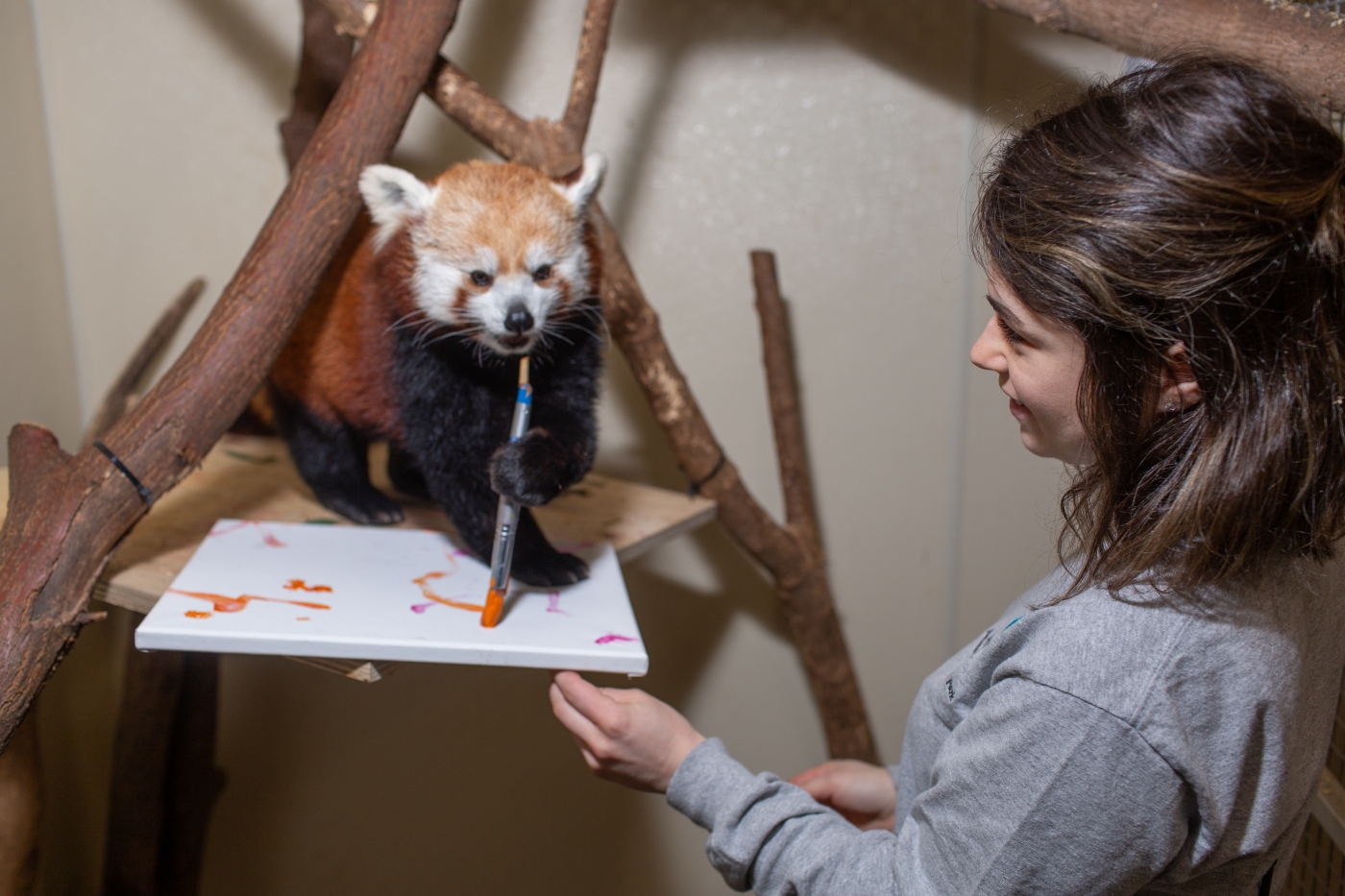
Whether we’re training our red pandas or deciding which enrichment to give them, we take into account their unique personalities, likes and dislikes. Jackie is very sweet and excited. Asa is an independent thinker and makes us work for her respect. She is also a much better artist than Jackie when we paint with them. Jackie is too impatient for this type of enrichment. He is not as picky as Asa, though. His favorite food (other than bamboo) is blueberries. We think Asa’s favorite are grapes, since they are the one treat she will always eat.
In my time working with red pandas, I’ve seen a lot of cute and interesting behaviors. One of my favorite memories is from 2016, when Asa first arrived and made a splash during her debut — literally. She got in the water and swam! Our animal care team had never seen a red panda swim before. It’s possible that they swim in the wild since they live close to waterways.
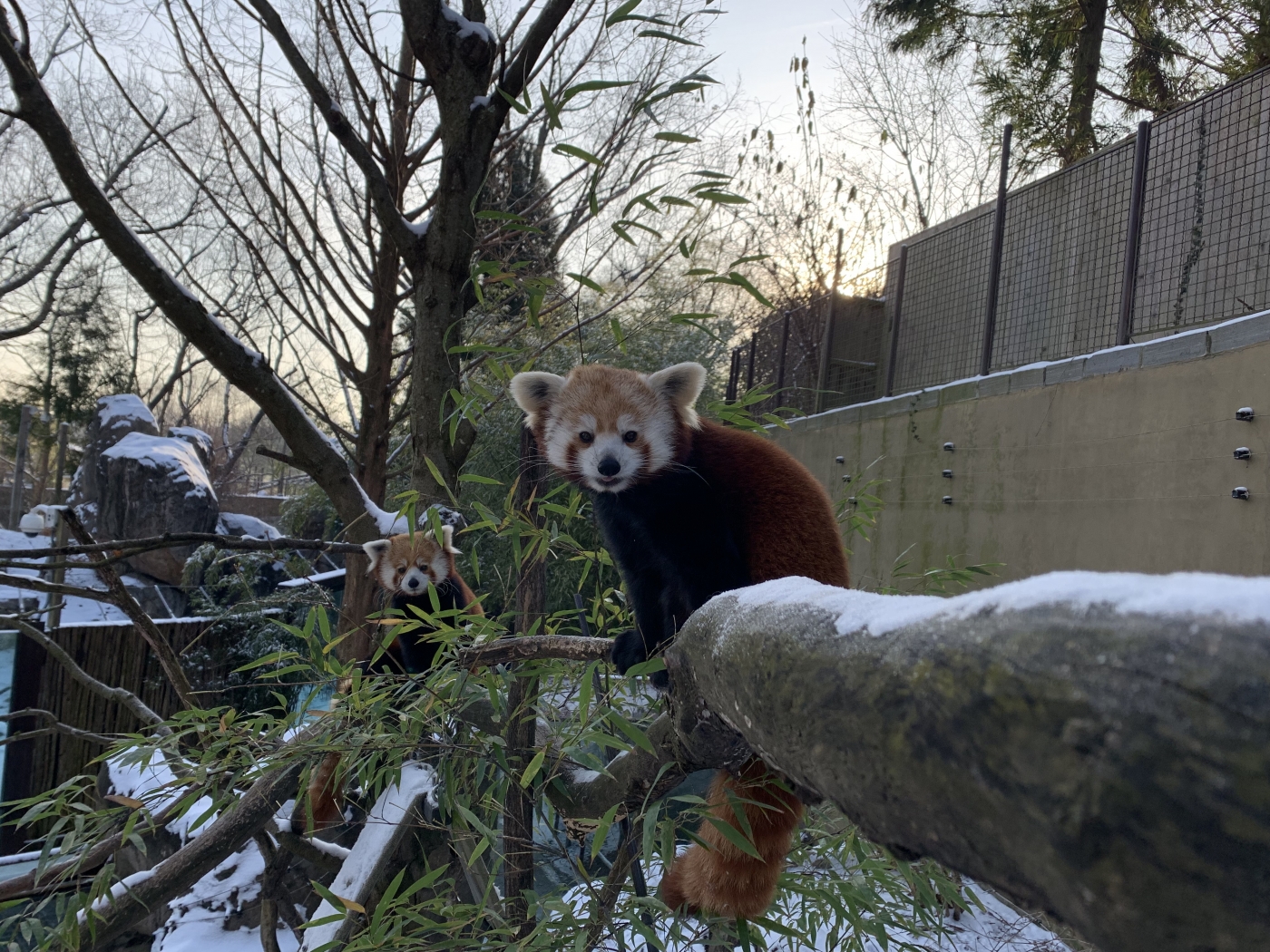
There is still much more to learn about these amazing animals. To any aspiring red panda keepers, I leave you with this advice: learn as much as you can. Education is a huge component to working with and conserving this species. Learning about red pandas and sharing what you know with others is a great way to get involved.
Planning a visit to the Zoo? Please note that Asia Trail, including red panda viewing, is currently closed for repaving. Learn more.
Related Species:

